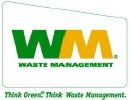|
Audubon At Home
>
The Audubon At Home Guide to Gardening for Life in Southeastern Pennsylvania
.
Gardening for life - for living things - is a growing trend in the United States. Habitat gardening provides safe places for birds, insects, and other wildlife while creating interesting and diverse landscapes for the enjoyment of people.
Residents of southeastern Pennsylvania are faced with challenges that are also found in other parts of the northeast: excessive water, invasive plants, deer, over-development, and more. The Guide to Gardening for Life offers 84 colorful pages with informative essays and companion profiles of noteworthy residents who have successfully tackled problems and created habitat spaces that are toxic-free and wildlife-friendly. Each chapter is summarized with helpful At Home Actions (AHA!) and includes tips from the profile subjects.
| Produced with funding from:
|

|
Readers will also find a number of plant and animal lists intended to enhance conservation efforts and exploration of one's ecological address and the changes that occur within it.
All of the chapters presented below are in PDF format and require Adobe Acrobat Reader to view. Download it here (free). Then click on a chapter below and take a look!
.
Join Audubon and receive a hardcopy version of this book FREE. Click here to download application.
| In partnership with:
|

|
To simply order a copy, please download and print the order form here.
.
.
Cover, inside cover, TOC, How to Use, intro (400k)
Habitat Gardening – Challenge & Champion (500k)
Lawn Alternatives – Challenge & Champion (700k)
Living with Wetlands – Challenge & Champion (400k)
Working with Rain – Challenge & Champion (500k)
Large Spaces – Challenge & Champion (500k)
Deer – Issue & Answer (300k)
Ecology, Soil, and Plant Communities – Essay (300k)
Wildlife Lists – Resources (200k)
Contacts, Resources, and Contributors (100k)
Topic summaries:
Introduction, Table of Contents, How to Use This Book
Habitat Gardening – Create a lively yard by making a plan, deciding what you want to keep, what you want to add, and implementing some healthy yard practices. See how an incredible private garden combines suburban practicality with features specifically placed for birds, butterflies, and other wildlife.
Lawn Alternatives – Reducing your lawn is a key element to creating a healthy yard – cutting down on lawn size will subsequently reduce water use, the need for pesticides and fertilizer, and hours of maintenance. Read about residents of an urban dwelling on a small lot and how they transformed their grassy areas into models of biodiversity.
Living with Wetlands – Restoring riparian buffers, (streamside vegetation zones) is an important conservation issue in this region and many others. The value of streams, creeks, rivers, and ponds cannot be overstated…many bird species, aquatic wildlife, and other animals depend on the health of such systems. Learn about a unique partnership between a homeowners association, a township, a county conservation district, and a state agency that resulted in the transformation of a retention basin into viable and diverse habitat.
Working With Rain – With an average of 42 inches per year falling in the Philadelphia region, rain presents a number of challenges: flooding, erosion, gardening. There are some creative and practical ways to avert these issues including the creation of a rain garden, where water-loving plants persuade water to slowly seep into the ground, instead of running down the street picking up pollutants along the way. One homeowner in Ambler moved into a muddy mess that became the catalyst for a vibrant garden and channels the rain making it friend, not foe.
Large Spaces – Big buildings on big land is a common site throughout the northeast. The burden that lawns present on smaller lots is multiplied many times over on corporate campuses and other large developments. Read how a local hospital created a healing garden on a large space in lieu of expanses of thirsty turf grass.
Deer – In a word, trouble. Their ravenous appetites and overgrown populations are wreaking havoc on ecosystems and home landscapes throughout the northeast. The guide offers some hard facts and a vegetation list culled from regional resources that offer "plants deer like least."
Ecology, Soil, and Plant Communities – Here's a new perspective on gardening…one that takes into account the interaction between plants, insects, and other organisms. Putting in some native plants is great, but creating self-sustaining plant communities is something even greater. It is not complex…it's natural.
Wildlife Lists – What have we here? From birds to beneficial insects and everything in between, this section provides lists that make up the living heritage of our region.
Contacts, Resources, and Contributors
Click here to find plant lists that will address your area of concern and offer a shopping list for the next native plant sale:
Plants with High Wildlife Value
Plants for Lawn Conversion
Plants for a Rain Garden
Plants Deer Like Least
Plants for Butterflies and Hummingbirds
Plants to Host Common Butterflies
Plants to attract Beneficial Insects
To simply order a copy, contact AudubonAtHome@audubon.org.
|

